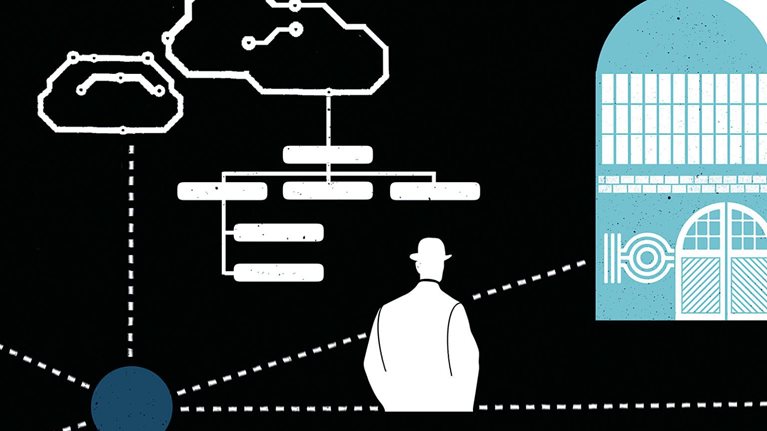In many companies, marketers have been first movers in social media, tapping into it for insights on how consumers think and behave. As social technologies mature and organizations become convinced of their power, we believe they will take on a broader role: informing competitive strategy. In particular, social media should help companies overcome some limits of old-school intelligence gathering, which typically involves collecting information from a range of public and proprietary sources, distilling insights using time-tested analytic methods, and creating reports for internal company “clients” often “siloed” by function or business unit.
Today, many people who have expert knowledge and shape perceptions about markets are freely exchanging data and viewpoints through social platforms. By identifying and engaging these players, employing potent Web-focused analytics to draw strategic meaning from social-media data, and channeling this information to people within the organization who need and want it, companies can develop a “social intelligence” that is forward looking, global in scope, and capable of playing out in real time.
This isn’t to suggest that “social” will entirely displace current methods of intelligence gathering. But it should emerge as a strong complement. As it does, social-intelligence literacy will become a critical asset for C-level executives and board members seeking the best possible basis for their decisions.
In this article, we explore four distinct ways social technologies can augment the intelligence-gathering approaches of companies. As Exhibit 1 makes clear, social media has little effect on some aspects of the intelligence cycle—in particular, the need to identify priorities for exploration and decision making over the next 6 to 12 months, as well as the use of assembled information to make unbiased decisions. But social technologies can play a surprisingly central role in how information is sourced, collected, analyzed, and distributed.1
Social media is changing the old-school intelligence cycle.

From identifying data to mapping people and conversations
Social media creates a new information map. Competitive analysts today differentiate between primary sources of information (from experts, competitors, employees, and suppliers), on the one hand, and secondary sources (such as published data, articles, and market research), on the other. Social intelligence operates on a different plane, identifying people and their conversations in social spaces. Its logic is that if you can find the right “curators” and experts collecting and channeling vital, accurate information, that eliminates the need for extensive searches of traditional databases and published information. Identifying the right people ultimately should induce companies to join existing online conversations and even shape them. This real-time information may help preempt key actions of competitors or lead to adjustments of strategy.
The costs of navigating without a social-intelligence map can be substantial. Servier, a French pharmaceutical company, is a case in point. Its licensed diabetes drug, Mediator, was also used extensively off-label for weight loss. The drug was withdrawn from the French market in November 2009 after questions arose about its safety, including its role in a number of deaths. For years after Mediator’s launch, in 1976, there had been little news in the press, let alone medical data, that pointed to problems. By 2003, though, online forums were hosting hundreds of conversations among concerned patients. Not long afterward, doctors and nutritionists began weighing in with their concerns about the drug’s safety. These early signals were too weak for traditional Web analysis to spot by simple keyword scanning. But if the analysis had shifted to deeper “argument mining,” diabetes-related conversations among experts would have appeared, perhaps prompting action by the company. A retrospective analysis from French social-media researchers found that by 2006 the conversations mapped through argument mining had shifted heavily to discussions of the drug’s risks.2
The case of Mediator, while perhaps extreme, hints at structural constraints that lurk within many organizations and hinder efforts to identify or act on key information—particularly when it runs against the organizational grain. Intelligence analysts often report exclusively to a single department, such as communications, marketing, or strategy. That can make analysts gravitate toward the approved pattern of thinking within their function, potentially limiting the breadth of insight they distill and sometimes even interfering with their judgment. Curating a variety of perspectives from multiple social-media sources should help internal checks and balances play out more freely and, in some cases, lead to necessary whistle-blowing. To reinforce this diversity of thought, companies can embed analysts across the organization in functions ranging from strategic planning and product development to R&D, customer service, and M&A planning.
As companies make such moves, they will probably need to update the profiles of their competitive-intelligence analysts. Recruitment from outside the company or even the industry can improve the odds that analysts will pick up a variety of signals that now may be missed. Leaders, too, will need to understand that decrypting weak signals may offer better strategic insights than the familiar patterns traditional intelligence sometimes serves up.
From data gathering to engaging and tracking
Analysts typically spend 80 percent of their time gathering information before they begin to analyze it. Social intelligence radically alters this process. Numerous tools allow analysts to create dynamic maps that pinpoint where information and expertise reside and to track new data in real time. The most effective way of obtaining new information is to engage a carefully mapped network of experts on specific subjects.
General Electric employed this proactive approach last year in an effort to gather ideas about what it called a “social” airplane, offering prizes with Virgin Airlines for the best insights. The company enlisted a community of more than 90,000 people who follow its @ecomagination Twitter account and organized conversations around key topics using hashtags.3 Over the course of only two hours, this global network produced thousands of ideas that had not been discussed or published elsewhere. Some focused on green topics, such as the use of solar panels and electric vehicles in engine-manufacturing operations and of LED lighting on aircraft. Participants also suggested giving each flight its own hashtag for conversations or allowing airlines to send messages directly to passengers when their rows were boarding. GE used the information to fine-tune its understanding of airline passengers’ expectations and to create new processes for injecting stakeholder input into strategic planning and product development.
Social media can also provide windows into the plans of competitors, suppliers, and customers. Consider, for example, how competitive analysts from one organization used LinkedIn to piece together, virtually, an advanced look at new features a major technology company was planning as part of a product upgrade. Because the company’s software developers were publicly sharing information about their work projects, it was possible to produce a surprisingly accurate view of the new product, with significant implications for the R&D and marketing strategies of suppliers within the major player’s ecosystem.
Companies today normally hire people with outstanding research and analytical skills. But socially astute analysts will need more, such as the ability to manage and engage an online community of trend spotters and, above all, the curiosity to reach out for novel sources of expertise. In effect, they must become hunters of information rather than gatherers. Companies will need to invest in the tools, such as network-mapping and influence-rating metrics, that analysts need to manage these new networks—for example, by helping to assess the expertise and relevance of community members. An obvious corollary is that companies should also be trying to reduce the odds of competitors “hunting” them in social spaces by making their people aware of how easy it is to inadvertently divulge valuable information.
From analysis and synthesis to structuring and mining
Few analysts deploy tools robust enough to draw useful insights from the turbulent new streams of social data. Most use older-line approaches taught in business schools—such as standard SWOT4 analyses or those employing Porter’s five forces—and often find themselves improvising. Even analysts who have dipped in the waters of social media often find themselves swimming upstream. Most of today’s techniques simply extract conversation flows found on the “usual suspects”: Facebook and Twitter.
Yet the availability of vast quantities of social-media data points has spawned an array of new analytic methods that can structure and derive insight from complex information. Earlier this year, executives at a major telecom company launched a social-research effort to get a detailed picture of consumer conversations about the company on social media. The results of that initiative were surprising and significant: a realization that 4G data speeds and new devices attracted the most discussion, fresh consumer perspectives on the strengths and weaknesses of the company’s major competitors, and the realization that the success of its growth strategy would depend on a more thorough education of customers.
Equally interesting, for our purposes, was the range of sources surveyed—more than 120 million blog entries, 10,000-plus discussion boards, and 90,000 Usenet groups, as well as CNET, Facebook, Twitter, and YouTube. We were also interested in the half-dozen new analytic techniques employed, including “buzz volume,” to isolate relevant messages about the company’s brand and those of competitors; “discussion topics,” which distilled a random sample of messages about the company and each competitor and arranged them by the topics that arose in discussions; “qualitative insights,” targeting notable quotes from the messages; and “consumer sentiment,” categorizing messages as positive, negative, mixed, or neutral (Exhibit 2).
An explosion in new analytical tools gives companies new ways to tap expertise.

As this list indicates, the range of analytical techniques has exploded, and to stay ahead of the game companies must tap new areas of expertise. Some may have to seek talented people from outside the organization who are familiar with the new methods or to invest heavily in upgrading the skills of current intelligence analysts. Central to this quest will be convincing senior leaders that the new methodologies are sound and the insights they provide will improve decision making. With little history and few case studies demonstrating their impact, this is often an uphill battle.
From reporting to curating and embedding
One complaint we often hear from analysts is that senior managers don’t act on the information channeled their way. There are good reasons for this inattention: intelligence reports often are formal documents sent by e-mail, broadcast by corporate newsletters, or posted on intranets. Content sometimes covers the waterfront of competitive topics, and information can be dated by the time it gets into decision makers’ hands.
By contrast, new social software now on the market lets companies rapidly, even automatically, curate highly pertinent information—from news sources, Web discussions by experts and influencers, freshly minted market data, and customer feedback. This software allows companies to produce “micropublications” that can be dispatched to decision makers instantly. External sources, such as paper.li and Flipboard, automatically generate targeted newsletters on a particular subject in attractive and intuitive formats. Almost any user within a company can therefore create a personalized information dashboard, which “democratizes” intelligence and embeds relevant data deep within the organization.
Desjardins, a large Canadian financial cooperative, has crafted such an approach, using Flipboard to deliver data and information that users can tailor to departmental needs. To do so, analysts at the company first identify online curators—experts, from outside the company, who are rated highly for their ability to scan and interpret information on financial services and financial technology. The list of experts evolves over time to account for new directions in the company’s strategy. To support an effort to enhance the customer experience, for example, a team of analysts could expand the network of experts to include people with best-practice knowledge outside the financial-services industry. The company aims to embed new thinking into its strategic processes continuously. Armed with a customized roster of experts, executives and managers throughout the organization can design their own narrowcast newsletters, selecting the curators who bring the most value to the company’s business goals. Previously, analysts had controlled the sources of information and distribution channels.
In an example of this approach at work, Desjardins recently tapped into cutting-edge trials of new electronic currencies being offered in the United States by start-ups such as Bitcoin. In the United Kingdom, to explore new forms of consumer and company finance, Desjardins tracked a community dedicated to crowdsourced funding. In Africa, it sought local experts on mobile-payment practices. The company has found that, particularly in fast-evolving markets, information-gathering approaches like these are more cost effective and better able to deliver timely data than the traditional alternative of relying on market research firms.
The Desjardins experience underscores the leverage companies gain when they distribute intelligence socially. Often, we find, one analyst within a company can identify a network of experts and curators. With this model in place, companies in effect “outsource” their data gathering—freeing up intelligence resources for other tasks, such as comprehensive data analysis and trend mapping. The organization’s information base becomes ever more granular as more and more committed executives learn social data skills. Next steps at Desjardins include moving beyond curation to a more targeted and structured analysis of competitors by deploying advanced tools to crunch the company’s increasingly granular social data.
Looking forward, more sophisticated users of social media, such as Desjardins, should be able to rate the relevance of information they receive, by using Web conventions such as “liking” or “+1 ing.” That permits analysts to track the ripple effects of information bursts as individuals virally propagate those they find most useful. Visual-mapping techniques also let analysts chart these new information flows, which may appear as nodes and connectors across a company’s geography. Such information maps highlight particularly strong knowledge relationships within companies and may provide clues for new organizational designs that optimize intelligence.
The information that companies need to meet competitive challenges is moving quickly from published and proprietary sources to the open, chaotic world of social platforms. Navigating this new environment effectively will require new skills and a willingness to engage in social conversations rather than merely assemble information. This is a mission that should extend across the organization. Senior executives can’t leave such important work to specialists. Social intelligence will sharpen strategic insights, and leaders must be immersed in the new information currents.


